A boat driven by an aeroplane-type propellor is usually called a propboat or an airboat, though 'fanboat' is sometimes used. The lack of a submerged propellor means that the boat can have a very shallow draught, and move through weeds without the propellor getting fouled.
If you steer by swivelling the engine or putting vanes in the propellor wash, then you can also dispense with a conventional rudder.
Airboats have a Wikipedia page.; this states that the first airboat was built in 1905 in Nova Scotia, Canada by Alexander Graham Bell, he of telephone fame. It had a propeller driven by a water-cooled aircraft engine. This raises the intriguing point that an IC engine is not essential, and a much earlier steam-powered airboat would seem to be practical; see the Bellanca hydroplane below. There is a picture about on the Web that claims to be a modern steam propboat but there's no sign of a boiler and I think it is an IC engine with a dirty exhaust.
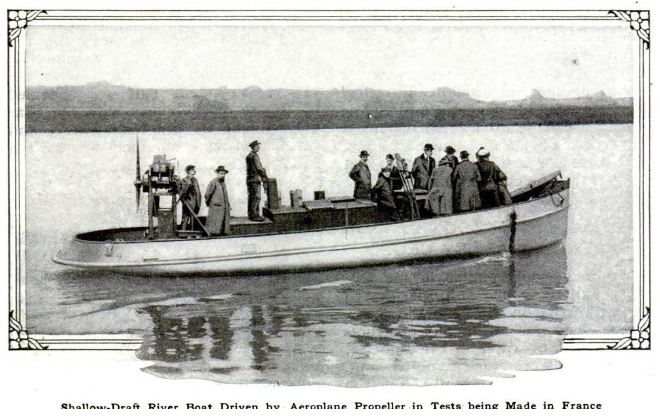 |
| Left: French Prop-boat: 1912
This must be one of the earliest prop-boats. As in later versions, the idea was to navigate in shallow or weed-filled waters, especially in the French colonies. The accompanying text gave very little information except that the tests except that they involved " one of the big monoplane manufacturing concerns of France."
There is no sign of any vanes to direct the air from the propellor, so presumably either a conventional rudder was retained for these tests, or the engine could be swivelled. The man third from left appears to be standing at the wheel.
Source: Popular Mechanics for Mar 1912, p481. It wasn't me that lopped the text at the bottom.
|
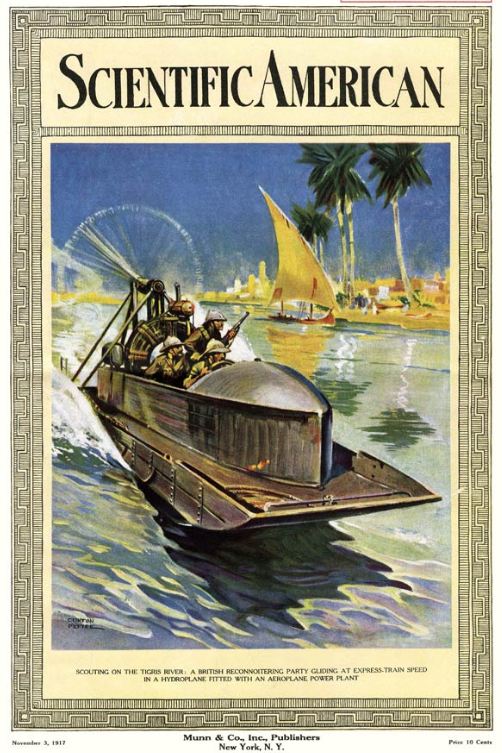 |
| Left: British Prop-boat: 1917
Beginning in 1915, the British Army used small, flat-bottomed hydroplanes with metal-clad wooden hulls, (which they referred to as Lambert "Hydro-Glisseurs") in the Mesopotamian Campaign of the First World War. Maximum speed was 55 miles per hour. They were mainly used for reconnaissance on the Tigris River.
Source: Scientific American for 3 Nov 1917. A brilliant cover illustration.
|
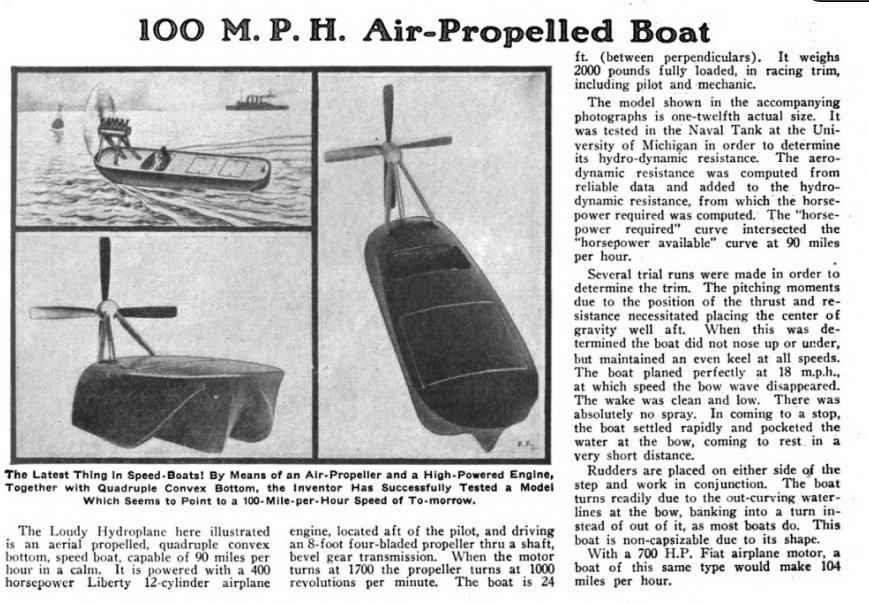 |
| Left: The Laudy Hydroplane model: 1919
A speed of 100 mph sounds impressive, but that is based on model tests only; whether a full-size version was built is unknown; if so it appears to be unknown to Google. This prop-boat design is unusual in that it has a tractor propellor at the front of the boat
This may be the chap:
"This was the first such course in the U. S. The regents established the degree in Aeronautical Engineering in 1916 and the holder of the first degree, a member of the class of 1916, is Flavius E. Laudy, now a Lieutenant Colonel in the A.A.F." See here.
Source: Unknown
|
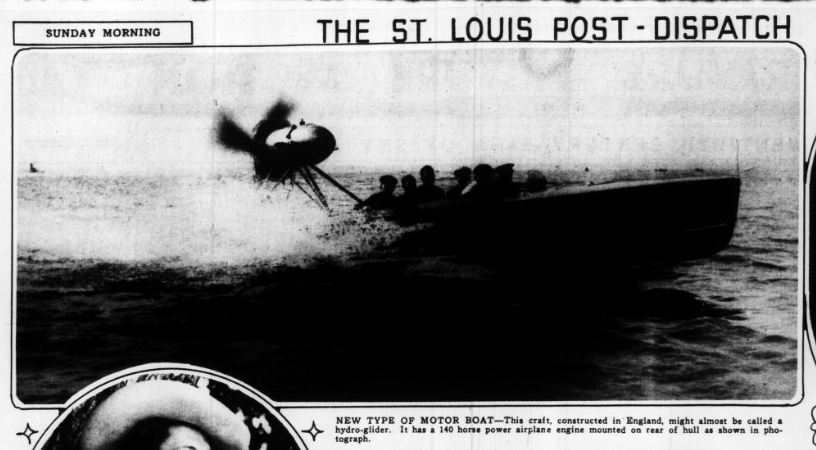 |
| Left: Unknown English propboat: 1931
This picture appeared in the St Louis Post-Dispatch, but unfortunately all we learn is that it had a 140 HP engine in that neat nacelle. No names are given to allow further research. A Google image search yielded nothing.
Source: The St Louis Post-Dispatch, 4th October 1931
|
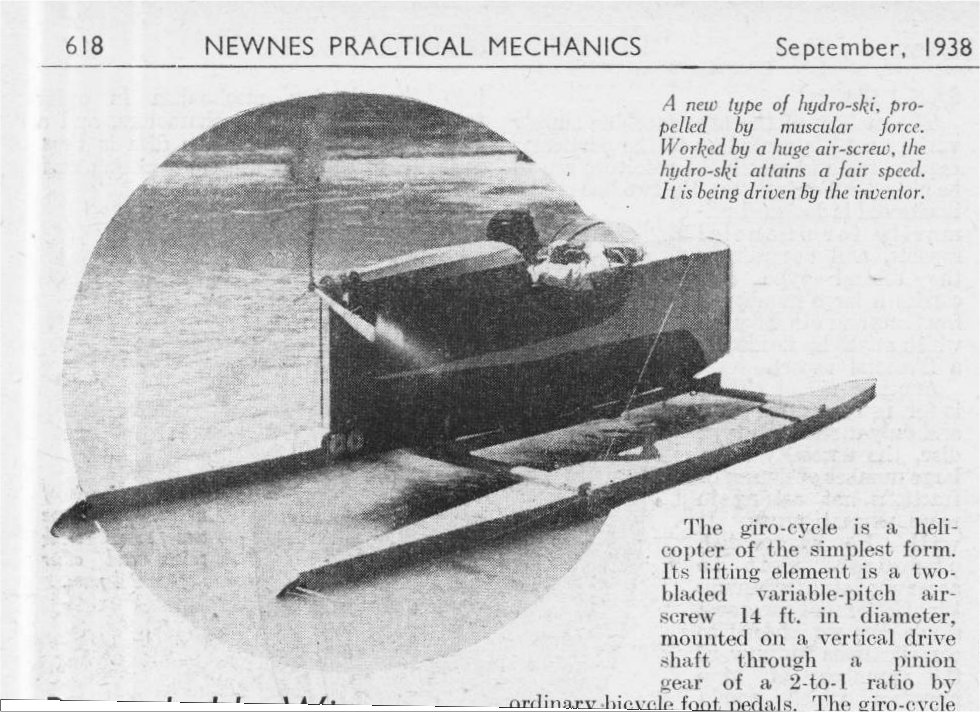 |
| Left: Pedal-powered catamaran: 1938
Pedal-power and a propellor do not seem to be a winning combnation. All depends on what you mean by a "fair speed". Not very fast, I suspect.
Source: Newnes Practical Mechanics for Sept 1938
|
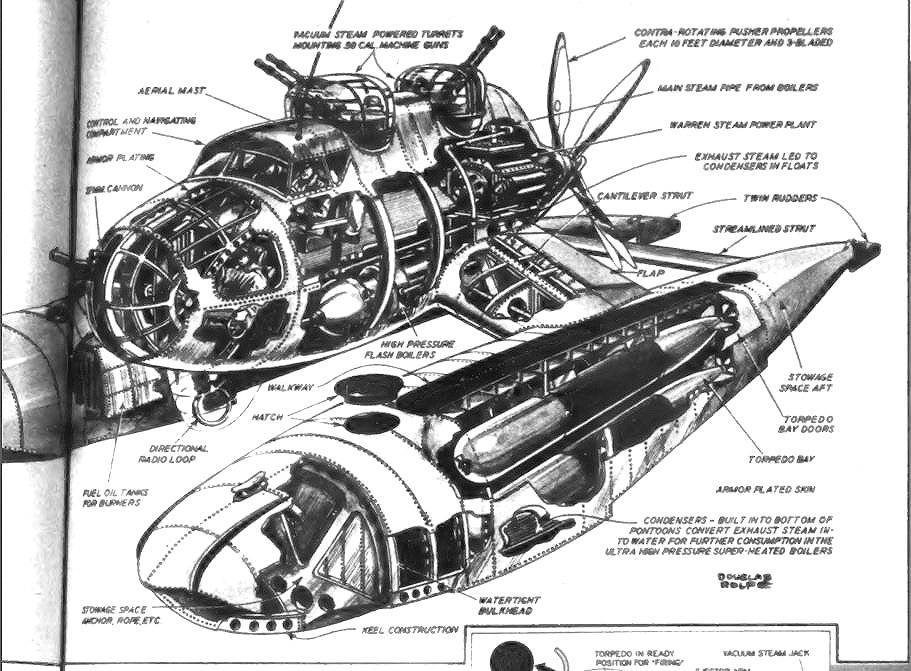 |
| Left: The Bellanca Hydroplane project: 1942
This amazing project was not only a remarkable attempt at a propellor-driven boat, but the best thing is that it was to be powered by... a rotary steam engine. This is attributed to 'Woodruff Warren' but this seems to be a mistake as the inventor was Edward C Warren, whose engine was not only was built (unlike most rotary engines) but tested quite extensively in a real ship.
Steam at 600 to 1000psi (a very high pressure) was to be generated by one (or possibly two) LaMont boilers to feed the Warren engine, which drove two contra-rotating three-blade propellers.
A speed of 100 mph sounds impressive, (where have we heard that figure before?) but would surely be impossible in any sea state short of a dead calm. However, Bellanca was not a random nutter- he was a respected aircraft designer at his Bellanca manufacturing company in the USA. Nevertheless, no prototype was actually built. Pity.
Source: Mechanix Illustrated Dec 1942, p49. The article refers to F M Bellanca,but the correct name is Giuseppe Mario Bellanca.
|
Between August and November 1940, The Bellanca company considered the possibility of setting up a factory, in Yonkers, New York, Brownsville, Texas, or possibly elsewhere, to build this torpedo boat for the US Navy and the United Kingdom’s Royal Navy. Bellanca had been unable to secure any airplane orders from the American military, was trying to survive as a company. In the event they got through by producing machine gun turrets and airplane components (ailerons, engine cowlings, flaps, wingtip floats, etc.) during the war.
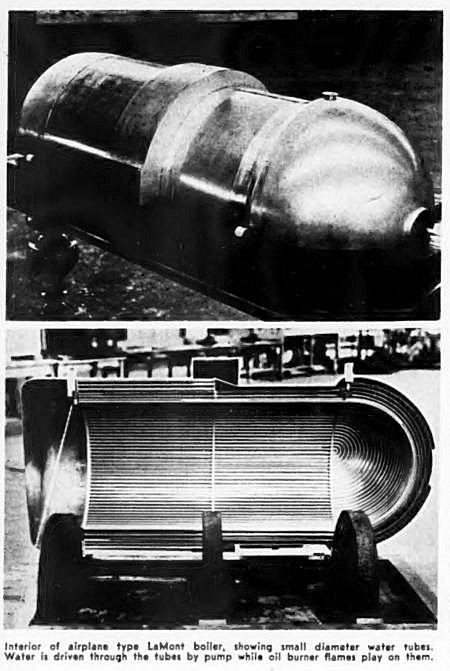 |
| Left: LaMont boiler for Bellanca hydroplane: 1942
These images come from the Mechanix Illustrated article. The LaMont boiler is a pumped-circulation type that can raise steam more quickly than other types. It was introduced by Walter Douglas La Mont, a Lieutenant Commander and engineer in the US Navy, in 1918. It seems odd that only the boilers should have been built for the hydroplane, and is is possible this example was intended for another craft, possibly the Gerber landing boat. (See end of article; unknown to Google)
Source: Mechanix Illustrated Dec 1942, p49.
|













